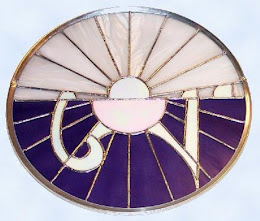
After being dismissed as a mythical figure in the since withdrawn affidavit filed by the government on the controversial Ram Setu project, Ram has once again become a symbol of the Great Aryan-Dravidian divide.
The DMK is not able to clearly decide whether to consider Ram a mythical character or an emblem of Aryan north who oppressed women and lower castes. Ravan, Ram’s adversary has, quite naturally, been adopted as their hero as they believe he was a Dravidian. That, as per Ramayan and other scriptures, Ravan was a Brahmin, considered Aryans by the DMK, does not make any difference. Their stand, based solely on one of the many colonial myths propounded by the British to perpetuate their rule and racial superiority by dividing Indians on as many dimensions as they possibly could, has completely overlooked the fact that in the available indigenous records and folklore of thousands of years, there is absolutely no mention of any such clash or divide at any point of time, till the British ‘invented’ it.
Such a big ‘clash’ of civilizations and cultures, and there is no native memory or record of it, particularly when neither the ‘Aryans’ nor the ‘Dravidians’ are extinct? Unfortunately, we Indians still do not question and remain slave to the many outlandish concepts and distortions created by the British like this one or the one about ‘marshal’ races, for example, plucked out of thin air by them.
Ram is one of the ten incarnations of Vishnu, the ‘Dasavatars’ as they are called both in the North and South. He is just not one stand alone mythical ‘Aryan’ king conjured by Valmiki. Hanuman or Anjaneya, (the son of Anjani) as he is popularly called in the South, cannot be separated from Ram. There are many, many temples of Hanuman all over the South. In Tirupati itself, an idol of Hanuman sits with folded hands, facing Lord Venkateswara, an incarnation of Vishnu, no different from Ram at another level. There is a magnificent, ancient
On 18 September, there was a very interesting program on CNN IBN, ‘Clash of Faith: ‘Aryan’ Ram no God down south’. The host, Sagarika Ghose not only chose her panelists with great sensitivity and intelligence, but also asked very pertinent questions covering the important aspects of this great religion-culture divide put in place by the British.
Two questions asked by Ghose from Ponmudi of the DMK were particularly interesting. When asked whether he could say similarly that Jesus and the Prophet were myths, Ponmudi could only say that since he was a so called Hindu he could criticise his own religion. To the question that Ravan, (DMK’s ‘Dravidian’ hero) was a Brahmin, Ponmudi had simply no answer.
The SMS poll results shown by CNN IBN were surprising considering that it is largely in the North that the Ram Setu issue has flared up very visibly, while the south has been largely silent, but for Mr. Karunanidhi giving it that Aryan-Dravidian twist. 79 per cent of those who answered said that Ram Setu was NOT an irrelevant issue down south.
Just goes to show how the silent majority is usually drowned by the loud few. And that, perhaps other than the die hard supporters of DMK in Tamil Nadu, Ram, the seventh incarnation of Vishnu, is revered by Hindus in all the states of
The transcript and video of the program on CNN IBN can be found here.
As far as Karunanidhi’s increasingly vituperative remarks on Ram are concerned, one can only say that this is yet another case of the ‘divide and rule’ politics that almost all our leaders have inherited from the British.The only difference is that while the Englishmen divided Indians to rule over them for the glory and greatness of their far away country, our politicians are dividing their own countrymen simply to win the next election for their selfish, narrow personal power, the country be damned.
In this mess where many fractured political constituencies have been created, there is no 'Indian' as far as politicians are concerned.
-------------------------------------------------------------------------------
Readers may also like to read:
1. Ram setu controversy: respecting faith
2. Ram Setu and timeless India




2 comments:
Ravan is real hero,not rama
Yes Our powerful Dravidian king is Ravan.
Post a Comment